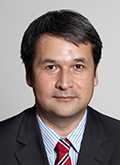Author Interviews, Gender Differences, HPV / 16.09.2019
Most Americans Unaware that HPV Causes Oral and Genital Cancers
MedicalResearch.com Interview with:
Dr. Ashish A. Deshmukh
UT Health School of Public Health
Houston
MedicalResearch.com: What is the background for this study?
Response: The HPV vaccination is recommended for females and males for prevention of 6 cancers (cervical, oropharyngeal, anal, penile, vaginal, and vulvar). Nearly 43,000 HPV-associated cancer cases are diagnosed every year in the US. Yet, it is extremely unfortunate and something that continues to bother us that HPV vaccination coverage remains low (50% in 2018) in the US and completion rate is nearly 5% lower in boys. Different from some industrialized nations where vaccination policy is school-based, vaccination policy in the US is clinic-based and parents are generally responsible for making vaccination decisions for their children. Generally, there are two main factors that drive parents’ decision-making:
(1) how much knowledge they have of HPV and (2) recommendation from a healthcare professional.
We analyzed the National Cancer Institute’s Health Information National Trend Survey (HINTS) of over 6000 participants focusing on their knowledge of HPV and HPV vaccination and whether participants received any vaccination recommendation from their health care provider. (more…)


